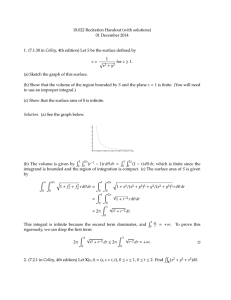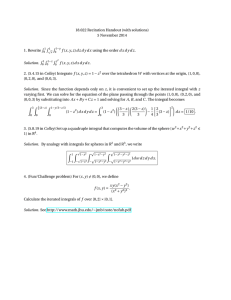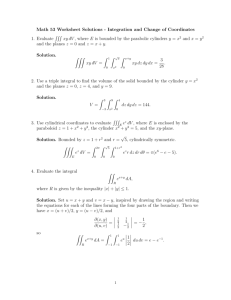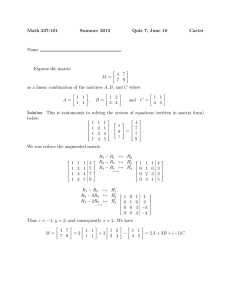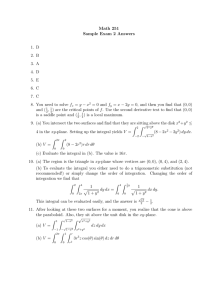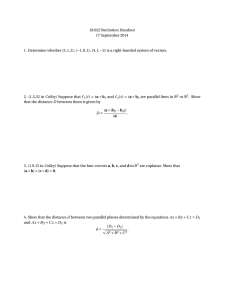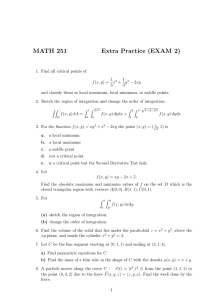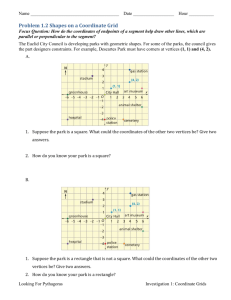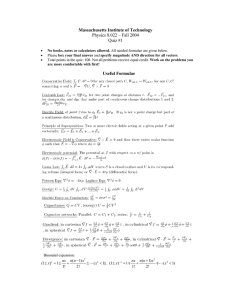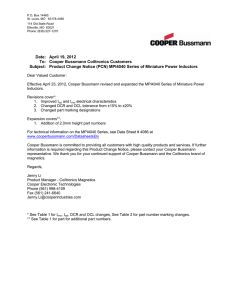18.022 Recitation Handout (with solutions) 13 November 2014 Z
advertisement
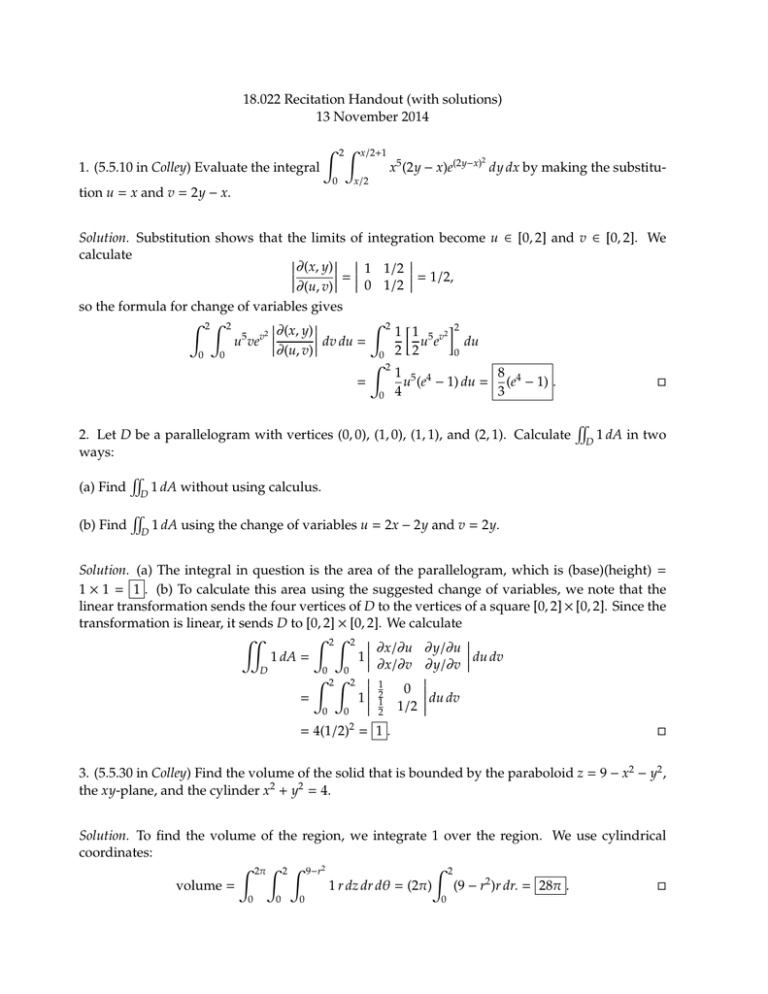
18.022 Recitation Handout (with solutions) 13 November 2014 x/2+1 Z 2Z 2 x5 (2y − x)e(2y−x) dy dx by making the substitu- 1. (5.5.10 in Colley) Evaluate the integral x/2 0 tion u = x and v = 2y − x. Solution. Substitution shows that the limits of integration become u ∈ [0, 2] and v ∈ [0, 2]. We calculate ∂(x, y) 1 1/2 ∂(u, v) = 0 1/2 = 1/2, so the formula for change of variables gives Z 2Z 2 Z 2 1 1 5 v2 2 5 v2 ∂(x, y) u ve dv du = du u e ∂(u, v) 0 0 0 0 2 2 Z 2 1 5 4 8 = u (e − 1) du = (e4 − 1) . 4 3 0 2. Let D be a parallelogram with vertices (0, 0), (1, 0), (1, 1), and (2, 1). Calculate ways: (a) Find (b) Find ! D ! D ! D 1 dA in two 1 dA without using calculus. 1 dA using the change of variables u = 2x − 2y and v = 2y. Solution. (a) The integral in question is the area of the parallelogram, which is (base)(height) = 1 × 1 = 1 . (b) To calculate this area using the suggested change of variables, we note that the linear transformation sends the four vertices of D to the vertices of a square [0, 2] × [0, 2]. Since the transformation is linear, it sends D to [0, 2] × [0, 2]. We calculate " Z 2 Z 2 ∂x/∂u ∂y/∂u du dv 1 dA = 1 ∂x/∂v ∂y/∂v D 0 0 Z 2 Z 2 1 2 0 = 1 1 du dv 1/2 0 0 2 = 4(1/2) = 1 . 2 3. (5.5.30 in Colley) Find the volume of the solid that is bounded by the paraboloid z = 9 − x2 − y2 , the xy-plane, and the cylinder x2 + y2 = 4. Solution. To find the volume of the region, we integrate 1 over the region. We use cylindrical coordinates: Z 2π Z 2 Z 9−r2 Z 2 volume = 1 r dz dr dθ = (2π) (9 − r2 )r dr. = 28π . 0 0 0 0 4. (5.5.29 in Colley) Find the volume of the region W that represents the intersection of the solid cylinder x2 + y2 ≤ 1 and the solid ellipsoid 2(x2 + y2 ) + z2 ≤ 10. Solution. We integrate in cylindrical coordinates: √ 1 Z 2π Z Z 0 0 10−2r2 √ − 10−2r2 Z r dz dr dθ = 2π 0 1 √ 4√ √ 2r 10 − 2r2 dr = 2 5 5−8 π . 3
